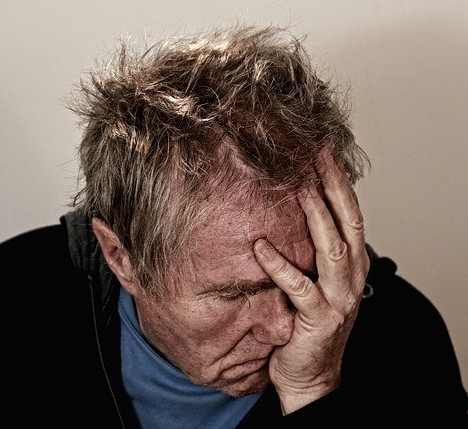
Many older people may experience anxiety and depression as they age. Anxiety can be recognized as extreme nervousness, feelings of fear and apprehensive paired with clinical symptoms such as a raised heartbeat, increased sweatiness, palpitations, dizziness, and shortness of breath.
Depression is another psychiatric disorder that is characterized by the loss of interest or pleasure in daily activities over the course of at least two weeks. Symptoms of depression may include, frequent crying, ignoring the importance of personal hygiene, thinking about suicide, feeling worthless, excessive somnolence or insomnia, and weight changes. Regardless of popular opinion, it should be known that these mood disorders are not a normal part of the aging process and should be recognized at the right moment and be dealt with carefully. Around 3% to 14% of older adults fulfill the criteria of a diagnosable anxiety disorder and around 27% of adults may not have enough symptoms to meet the criteria of a diagnosed disorder, but those symptoms might be sufficient to be negatively impacting their emotional well being.
The only solution to these problems in the elderly would be seeking some form of treatment either in the form of therapy or medications. The mainstay of treatment is therapy in the form of counseling and simple breathing exercises paired with relaxing techniques such as circular breathing. These techniques discussed below can be learned and practiced on one’s own:
1. Practicing deep breathing exercises: Deep breathing is a simple yet powerful exercise which helps you enjoy the added benefit of practicing this technique at any time, place and situation. It can be combined with other techniques such as aromatherapy and music for added benefit. The core concept of deep breathing is making an effort to breathe from your abdomen instead of your upper chest. This technique can be practiced while sitting up straight or by lying down, breathing through your nose and exhaling out of your mouth.
2. Progressive muscle relaxation: Progressive muscle relaxation is another popular technique which works on the principle of relaxing different muscle groups of the body. If practiced properly, ultimately a point can be reached where the whole body and the mind can be relaxed swiftly. Older adults should consult their physician before starting this technique if they have a history of muscle spasms, back pain or other serious injuries responsible for muscle rigidity and stiffness. The sequence to be followed for the execution of this technique is as follows: Right foot then left foot, moving on to the calves and the thighs, hips and buttocks, stomach, chest, back, right arm and then the left arm, neck, and shoulders, and then the face.
3. Mindfulness meditation: This technique is a technique practiced widely in solitude. Rather than worrying about the unforeseen future, this technique focuses on reflecting on the past and enabling the person to fully take charge of the present. This technique encourages the person to release toxic internal thoughts and sensations. For maximal effect, this practice can be paired with deep breathing and muscle relaxation techniques.
4. Rhythmic movements: Rhythmic movements which would not take a toll on the health of older adults such as walking or light jogging can help relieve stress. This takes one’s mind off toxic thoughts and focuses it on the physical activity at hand. It also lowers blood pressure and gives the person more control over their health and chronic debilitating diseases which might be an important contributing factor in anxiety and depression.
5. Visualization: Visualization or guided imagery is a technique which is dependent upon one’s imagination to achieve mental and physical well being. It involves imagining a scene in which you feel completely at peace. It may be a favorite vacation spot you always wanted to go, a nostalgic childhood place or a completely imagined scenario. This technique can be practiced on your own or even a therapist can guide you through this process. Listening aids such as soothing music depicting birds chirping or the waves of the ocean can be downloaded to help make this experience more realistic.
While stress and frustration in the older population are inevitable, it should always be encouraged to put in an effort and take charge of these feelings and managing them by practicing these safe and easy relaxation techniques.
Author Bio:
Today’s post was brought to you by guest blogger, Hassan Khan Yousafzai. He has an educational background in software engineering. Hassan is bridging the gap between marketing and development department. In Techvando, he has been consulting brands all over Pakistan to gain online traffic and profitable leads.

I really appreciate this article because as I am just 24, I myself practice these techniques and find it extremely helpful. They seem so simple and are often over looked but have major effects on the body. I can only imagine if an older person were to adapt these techniques, how beneficial it would be. Thank you for this article, I will definitely pass it on to the older folks in my family.
This is so nice, and its true as old age catches up with us Anxiety and depression kicks in especially due to the loneliness that comes with it, Most parents are left alone when kids grow up and move to search for work in a different city or get married. Its very common and having some techniques like you have given above can really help. personally, I love Mindfulness meditation as it helps me get my internal feel as I meditate